Have you ever noticed yellow or white spots on your plants and wondered what was causing them? It could be the dreaded spider mite infestation. But what do spider mites look like on plants, and how can you tell the symptoms and signs of an infestation? This blog post will explain all the key indicators to look out for so you can spot a spider mite infestation before it gets out of hand.
What are Spider Mites?
Spider mites are tiny, sap-sucking pests that attack a wide range of plants. These mites are usually found on the undersides of leaves, and can also inhabit stems, flowers, fruits, and other parts of the plant. Some spider mite species cause discoloration, yellowing, or bronzing of foliage, as well as leaf drops. Others produce webbing on the plant’s surface — hence their name.
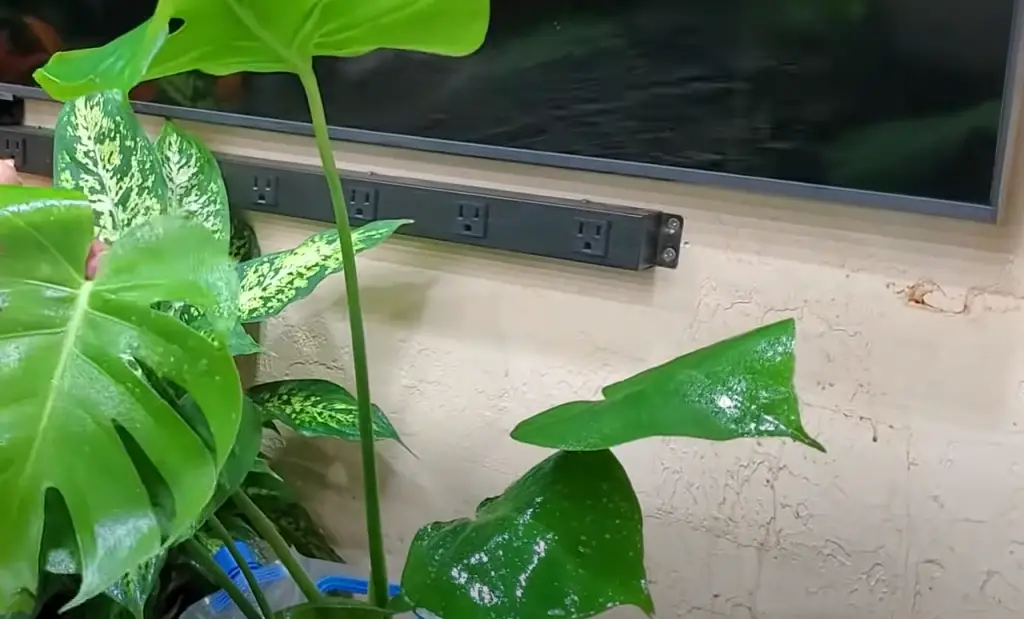
Spider mites cause severe damage to plants by sucking out cell contents from leaves and stems which results in stunted growth and eventual death of the affected plant if left unchecked. The most common spider mite species affecting houseplants and outdoor gardens is the two-spotted spider mite (Tetranychus urticae). It has a reddish body with two spots on its back, hence the name. Other species of spider mites can be identified by their different colors, such as orange, yellow, or green.
Spider mites are prolific breeders and can quickly become an infestation if not controlled. In optimal conditions, they reproduce at an alarming rate — up to seven generations in one season! The best way to get rid of spider mites is to use some form of control methods such as natural predators or insecticides. Natural predators include ladybugs, lacewings, predatory mites, and certain parasitic wasps that feed on the eggs and larvae of spider mites. Insecticidal soaps and horticultural oils are also effective at controlling spider mites and preventing further infestations [1].
How Do You Control Spider Mites?
There are several methods to control spider mites, and the best approach will depend on the severity of the infestation.
One way to get rid of spider mites is to introduce natural predators into your garden. Ladybugs, lacewings, predatory mites, and certain parasitic wasps feed on the eggs and larvae of spider mites — and can be effective at keeping them in check.
Insecticidal soaps or horticultural oils can also be used for controlling spider mite populations. Both are contact killers that suffocate the mites on contact. However, they may not be effective against eggs and can only provide short-term control.
For severe infestations, chemical pesticides labeled for spider mite control can be used. Make sure to read the label carefully and follow all instructions — including when to apply, how much to use, and any necessary safety precautions.
Finally, good garden hygiene can help keep spider mite populations in check. Regularly removing dead or dying foliage from your garden will reduce potential breeding sites for pests. In addition, pruning back heavily infested branches can help contain the spread of the pests before they become an uncontrollable population [2].
Signs of Spider Mite Infestation
Stippling or Yellow Specks
Spider mite infestations often cause the leaves of affected plants to become stippled, which means they have small yellowish spots that look like paint flecks.

Stippling is caused by the spider mites piercing the cells of the leaf and sucking out their contents. This damage will eventually cause the leaves to turn yellow or brown and drop from the plant.
Silken Webbing
The webs spun by spider mites are quite fine and difficult to detect with the naked eye. If you suspect your plant has been infested, examine it closely for webbing on both sides of its leaves and underneath them as well. These silky threads can indicate a heavy spider mite presence.
Leaf Curl
Spider mites can cause leaves to curl as they feed on them. This is especially common on vegetable crops and trees such as apples, pears, and cherries. In severe cases, the leaves may become so distorted that they look almost like a tube or bowl shape.
White Shed Skins
Inspecting the underside of your plant’s leaves can help you determine if it has been invaded by spider mites. Look for tiny white shed skins, which are left behind after the mites molt their exoskeleton. These discolored spots can be an indication of a spider mite infestation that requires treatment.
High Population
When spider mite populations get high enough, you may even be able to see them crawling around on the leaves of your plant. These tiny arachnids are usually reddish-brown and are about the size of a pinhead. If you can spot these pests, it is time to take action and treat your infestation as soon as possible.
Patchy, Decaying Foliage
Spider mite infestations can cause foliage to become patchy and begin to decay. This is especially common on the older leaves of a plant, which often suffer from the greatest damage. If you notice patches of discolored or decaying foliage, it is a good indication that your plant has been invaded by spider mites. Treating your plant for infestation as soon as possible can help prevent further damage and restore its health.
Wilting Leaves
When spider mites feed on the leaves of a plant, they suck out all their moisture and nutrients, leaving them dry and wilted.
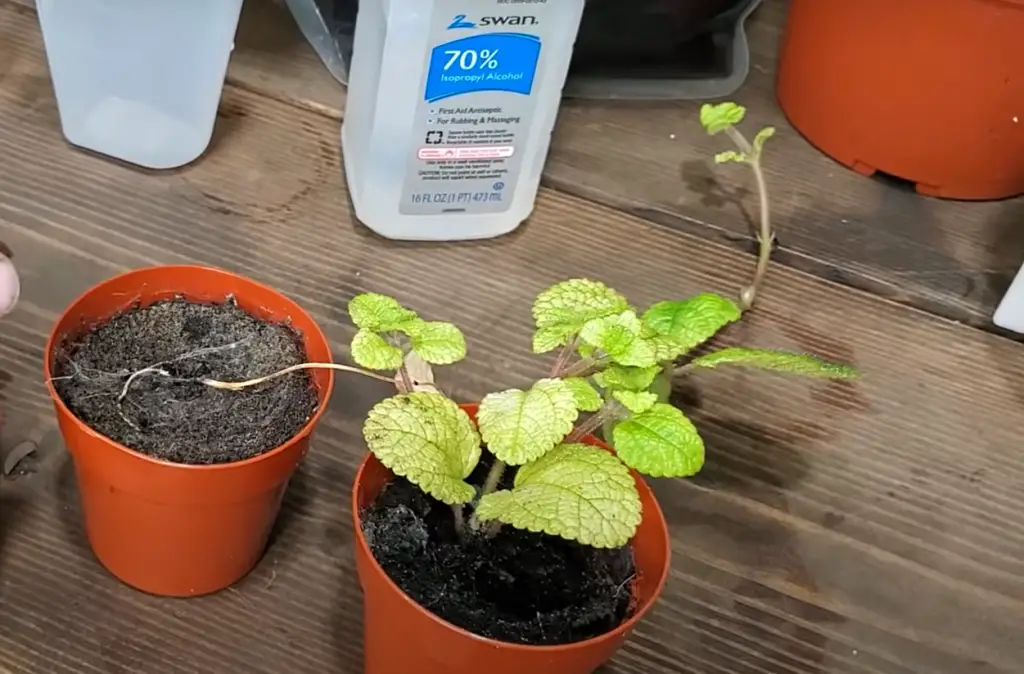
Wilting leaves are one of the clearest signs you have an infestation on your hands and should be taken seriously [3].
Stages of Spider Mite Infestation
Stage One: Localized Stippling
The first stage of spider mite infestation is localized stippling. Stippling appears as tiny yellow or white spots on the surface of leaves. This is caused by a group of spider mites feeding on chlorophyll in the leaf’s cells, resulting in what looks like small pinpricks of damage. At this stage, it can be hard to detect a problem as the pests are often too small to see with the naked eye.
Stage Two: Extensive Stippling and Leaf Curl
As the spider mite population grows, the stippling becomes more extensive, and the leaves may begin to curl or discolor. This stage is often accompanied by webbing on the underside of leaves as well as eggs and adults that are visible to the naked eye.
Stage Three: Severe Damage and Plant Death
At this point, plants can suffer serious damage, even death if the infestation is left unchecked. The foliage will become severely discolored and may start to drop off in clumps. Additionally, webbing will cover most of the foliage making it difficult for photosynthesis to occur leading to further plant stress or death. It’s important to take action at this stage as the spider mites can spread quickly to other nearby plants.
Stage Four: Extensive Dead Foliage
If left unchecked, the infestation can lead to extensive dead foliage. The webbing will become thicker and denser as the mites continue to feed and reproduce.
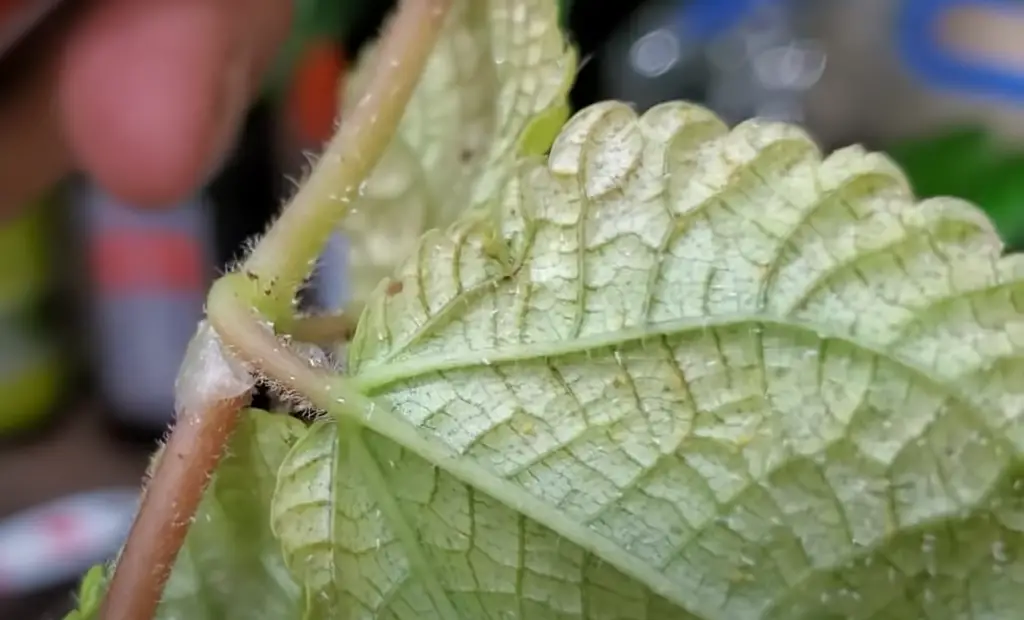
At this stage, it is important to remove dead foliage from the plant and surrounding area as soon as possible in order to prevent further spread of spider mite populations.
Stage Five: Re-infestation
Unfortunately, even after successful control measures have been taken, spider mite populations can quickly rebuild if conditions are right. It’s therefore important to monitor plants carefully for signs of re-infestation in order to take quick action before a full-scale outbreak occurs again.
How to Treat Spider Mites
Step one
The first step in treating spider mites is to identify them. Spider mites are tiny spider-like pests that feed on the undersides of plant leaves and create webs along the stems and undersides of the leaves. They can be identified by their small size (just a few millimeters), pale yellow or green color, and webbing.
Step two
Once you have identified spider mites, it’s important to take steps to reduce their population as soon as possible. The best way to do this is through physical removal methods such as handpicking, vacuuming, or hosing down infested plants with water. This will help alleviate some of the pressure on your plants while also reducing the number of mites.
Step three
If physical removal methods don’t work, chemical treatments may be necessary. There are several types of pesticide sprays and dust available at garden centers and stores that are specifically designed to kill spider mites and their eggs.
Step four
Once you have treated your plants with a pesticide, it is important to keep an eye on them for signs of new infestations. Regularly inspect all parts of your plants for webs and other signs of spider mites and if any are found, treat the plant again as soon as possible. Prevention is key in keeping spider mite populations under control so be sure to practice good garden hygiene and regularly inspect your plants for signs of infestation. By following these simple steps you can help keep spider mites away from your plants.
How Do I Stop Spider Mites from Spreading?
Watering Your Plants
One of the most effective methods to prevent spider mites from spreading is to keep your plants well-watered. Spider mites prefer dry conditions, so by keeping your plants moist, you will discourage them from multiplying quickly or establishing themselves in your garden. Make sure that soil is kept evenly moist but not too soggy; this will help reduce the risk of spider mite infestations.
Pruning and Cleaning
Regularly pruning and cleaning off any dead leaves or branches can help reduce the risk of spider mites spreading. Pruning helps to maintain an open canopy, which allows for air circulation and reduces the humidity that spider mites thrive.
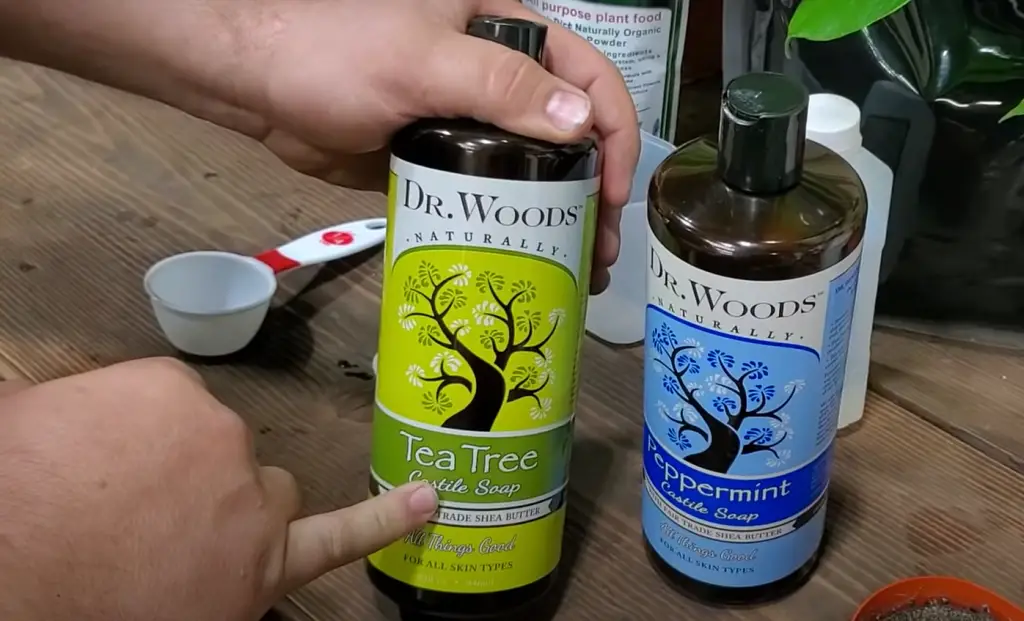
Regularly cleaning off any dead leaves or debris from the garden can also help minimize their presence as these materials provide them with a safe environment.
Soapy Water
If you already have a spider mite infestation, spraying your plants with soapy water can be an effective way to reduce their numbers. The soap helps to suffocate the spider mites and disrupts their lifecycle. Make sure that you use plain, mild dish soap for this purpose as any additives or perfumes may damage your plant’s leaves. Additionally, make sure to spray all parts of the plant including both sides of the leaves, as well as any stems or branches that could be harboring spider mites. Be careful not to spray too much though as it can cause leaf burn.
Insecticidal Soaps
If more heavy-handed measures are needed, insecticidal soaps can help kill off the existing spider mite population. These soaps are specifically formulated to target and kill these pests without harming plants or other beneficial insects. Make sure that you always follow the manufacturer’s instructions when using insecticidal soaps as they can be toxic if not used correctly.
Organic Control Agents
There are also organic control agents available which are safe for use around plants and people. Some of the most common organic treatments include neem oil, horticultural oils, garlic spray, and pyrethrin-based products. All of these methods work by killing off existing spider mites as well as disrupting their lifecycle to prevent them from reproducing. As with any pest control method, make sure that you read all of the instructions carefully before applying any of these products to your plants.
Physical Removal
A final option for controlling spider mites is physical removal. This can be done by using a vacuum or soft brush to remove any existing mites from the plants. Be sure to dispose of the collected material away from the garden in order to prevent them from returning. Additionally, you should also check other nearby plants and inspect their leaves carefully for signs of infestation. Taking proactive measures like these can help reduce the risk of an infestation spreading throughout your garden.
Soapy Water + Neem Oil
For more persistent infestations, a combination of soapy water and neem oil may be necessary. Neem oil is a natural insecticide that can help reduce spider mite populations without damaging the plants or other beneficial insects in your garden.
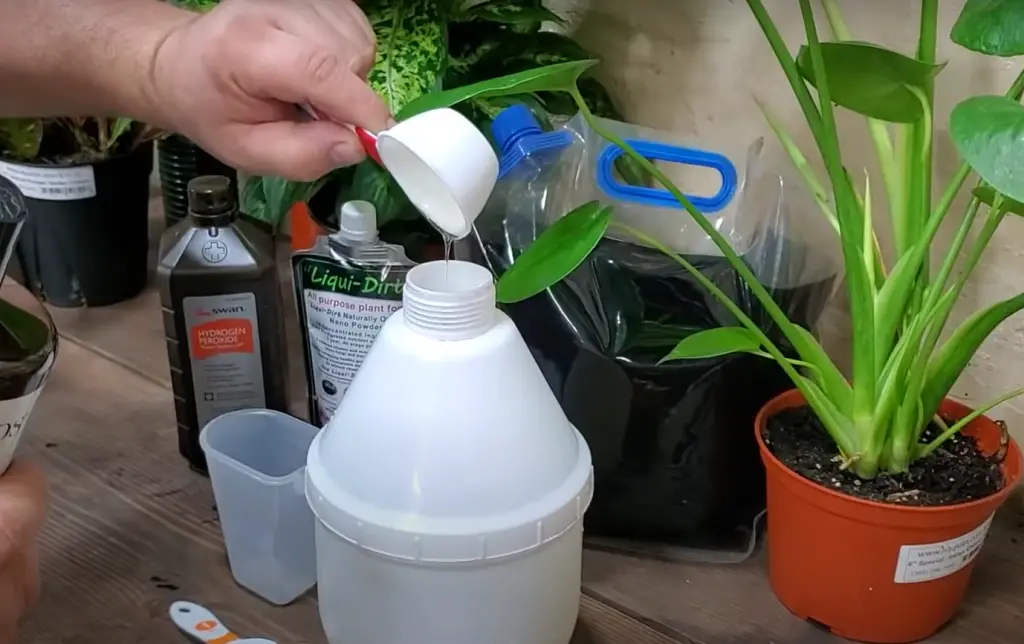
When using this method, it is important to remember that both soapy water and neem oil must be applied regularly in order to maintain control of the pests. Additionally, make sure that you follow the safety instructions provided by the manufacturer when using any form of pesticide or insecticide.
Natural Predators
The use of natural predators can also help reduce spider mite populations. Ladybugs, lacewings, and predatory mites are all effective predators when released into affected areas; however, the effectiveness of these methods can vary depending on the climate and location. Additionally, introducing natural predators to an area may not be enough to completely eradicate existing populations so it’s important to combine with other control methods in order to achieve the best results.
Companion Planting
One final strategy for controlling spider mites is to use companion planting. This involves planting certain varieties of plants next to each other in order to repel or confuse the pests. Garlic, marigolds, and onions are all known to deter spider mites when planted near susceptible crops. Additionally, companion planting can also help attract beneficial insects which can help reduce spider mite populations as well [1].
FAQ
How do you know if your plant has spider mites?
Spider mites can be difficult to detect since they are so small. Signs of spider mite infestations may include webbing, discolored spots or stippling on leaves, and a sticky substance on leaves caused by the mites’ excrement. Leaves may also be yellow or look burned at the edges due to extensive feeding damage. The presence of adults or eggs is rarely seen, but if present, they will appear as tiny moving dots on the undersides of leaves. If you suspect your plant has spider mites, it is important to take action quickly in order to prevent them from damaging your plants further. Use insecticidal soap or horticultural oil to treat infested areas as soon as possible. Additionally, move your plant away from other plants and wipe down the leaves with a damp cloth to remove existing mites.
What are the first signs of spider mites?
The first signs of spider mites are typically small yellow, white, or brown spots on the leaves. Other indications include stippling and webbing on the leaves. As the infestation progresses, the leaves may look burned with yellow patches, and there may be a sticky substance on the leaves caused by the mites’ excrement. Additionally, you may see specks crawling around on the undersides of leaves which could be adults or eggs. If you notice any of these signs, it is important to act quickly in order to prevent further damage from occurring.
What kills spider mites on plants?
Insecticidal soap, horticultural oil, and neem oil can all be used to get rid of spider mites on plants. These products are specifically designed to kill spider mites without harming the plants themselves. Insecticidal soaps and oils work by smothering the bugs, while neem oil works by disrupting their reproductive ability and deterring them from feeding on your plants. Additionally, you can also use predatory insects such as ladybugs or lacewings to help naturally control the population of spider mites. It is important to remember that chemical solutions should always be used as a last resort since they may harm beneficial insects in addition to targeting pests.
How do I prevent spider mites from coming back?
There are several steps you can take to prevent spider mites from coming back. First, keep your plants in a clean and dry environment with plenty of circulation. Spider mites thrive in warm, humid areas so make sure the area around your plants is well ventilated. Second, inspect new plants before bringing them into your home or garden to make sure they don’t have any eggs or adult mites present on the leaves, stems, or flowers.

Third, regularly check for signs of infestation and act quickly if you notice any. Finally, prune away any damaged parts of the plant to reduce hiding spots for mites. All these steps will help ensure that your plants remain free from spider mite infestations.
Can you use soap to get rid of spider mites?
Yes, insecticidal soaps and horticultural oils are effective at getting rid of spider mites on plants. Insecticidal soaps and oils work by smothering the bugs, while neem oil works by disrupting their reproductive ability and deterring them from feeding on your plants. Be sure to follow the instructions on the packaging carefully when using any chemical treatments in order to avoid harming beneficial insects or damaging your plants. Additionally, make sure to rinse off any remaining residues after treatment as these can be harmful if ingested.
What is the best way to get rid of spider mites?
The best way to get rid of spider mites is a combination of physical removal, insecticides, and natural predators. Physically removing mites by wiping down the leaves with a damp cloth is an effective way to reduce their numbers. Additionally, using insecticidal soap or horticultural oils can kill any remaining mites on contact.
Finally, introducing beneficial insects such as ladybugs or lacewings can help naturally control the population of spider mites. It may take a few weeks for you to notice any improvement in your plants since it takes time for the natural predators to reproduce and make an impact. However, this method offers long-term solutions that will help keep your plants free from infestation in the future.
Can you visibly see spider mites?
Yes, it is possible to visibly see spider mites on plants. Adult mites are small, oval-shaped creatures that range in color from pale green to dark red. Additionally, you may be able to see their webs or the white spots they leave behind on leaves. If you notice any of these signs, it is important to act quickly in order to prevent further damage from occurring.
Why do you need to act quickly when dealing with spider mites?
Spider mites can reproduce very quickly and their numbers can grow exponentially in a short amount of time. If left unchecked, they can cause significant damage to plants by sucking out the sap from leaves and affecting photosynthesis. This leads to yellowing or browning of the leaves as well as stunted growth in some cases. Additionally, they are known to be vectors for some plant viruses which further add to the potential damage that these pests can cause. Therefore, it is important to act quickly when dealing with spider mite infestations in order to prevent any further damage from occurring.
What are some natural methods of controlling spider mites?
One of the most effective and environmentally friendly methods of controlling spider mites is by introducing natural predators. Ladybugs, lacewings, and predatory mites are all helpful in reducing spider mite populations. Additionally, using insecticidal soaps or horticultural oils can help to reduce the presence of these pests as well. For more persistent infestations, neem oil can be used to disrupt the reproduction cycle of the spider mites and keep them away from your plants. Finally, making sure to clean up any fallen leaves or debris around your plants regularly will help to reduce hiding spots for spider mites, and other pests.
How to choose the right insecticidal soap or oil for spider mites?
When choosing an insecticidal soap or horticultural oil to treat spider mite infestations, it is important to read the label carefully. Pay special attention to the active ingredients and make sure that they are safe for use on your particular plants. Additionally, take into account the temperature and humidity of your area as some products may not be effective in certain climates. Finally, consider any beneficial insects you may have in your garden as many treatments can kill these helpful bugs as well. By following these steps, you’ll be able to choose a treatment that will get rid of spider mites without harming your other plants or insects.
How to maintain healthy plants to prevent spider mites?
Maintaining healthy plants can help to reduce the risk of spider mite infestations. It is important to provide your plants with proper watering, sunlight, and nutrition in order for them to grow strong and healthy. Additionally, controlling weeds and any other pests that may be present in your garden can help keep spider mites away. Finally, keeping debris and fallen leaves cleaned up regularly will also reduce hiding spots for these pests. With a combination of these strategies, you’ll be better able to protect your plants from potential infestations.
What are some other pest control methods?
In addition to natural predators and insecticidal soaps or oils, there are various other methods of controlling pests. Chemical treatments such as insecticides can be used for more persistent infestations, although they should only be used as a last resort due to their potentially harmful effects on the environment. Additionally, physical removal of pests can help reduce population numbers by handpicking them off plants when necessary. Finally, using row covers or screens around your garden can help to keep pests out as well.
Useful Video: KILLING SPIDER MITES & APHIDS DEAD. www.liquidirt.com for how to keep plants healthy.
Conclusion
Spider mites on plants look like tiny moving dots, and can quickly devastate your plants if left unchecked. It’s important to take preventive measures such as keeping the area around your plants clean and dry, regular inspection of the leaves for any signs of infestation, and removing or treating affected plants. If these measures fail, chemical controls are available to help manage spider mite populations. Before using any pesticide, it is important to read the label carefully and follow all safety instructions. With a little bit of effort and vigilance, you can protect your precious plants from spider mites!
References:
- https://www.webmd.com/a-to-z-guides/spider-mites-what-to-know
- https://www.planetnatural.com/pest-problem-solver/houseplant-pests/spider-mite-control/
- https://blog.davey.com/how-to-identify-and-treat-spider-mites/
- https://www.growell.co.uk/blogs/hints-tips/the-definitive-guide-to-dealing-with-spider-mites










Leave a Reply
View Comments